
Being a strong runner is not just about running more and more miles. In fact, doing more running to improve running can lead to injury. This is where focused strength development can really help.
The strongest runners are those who are able to consistently rack up week after week of training and in doing so develop a whole-body strength that supports their training volume and enables them to push harder, tolerate more and dig deep when it matters.
Being a strong runner means you’re robust and resilient, better conditioned, functionally more tolerant to the demands of specific running and at lower risk of injury.
Research has shown that specific strength training sessions can improve running performance. Having strong major muscle groups and specific smaller muscles can help runners continue
to move with the same effectiveness through a full range of motion.
When you start to get tired and the strength required to execute the same movement pattern weakens, it’s strength training that really helps to drive your forwards.
Strength training for runners shouldn’t be about lifting heavy weights or getting buff. Instead, it should be specific to the needs of the individual runner, and functional in that it’s aimed at your weaknesses or the biomechanical areas of concern.
It should also be subtle yet effective, complementing the running that you already do. Key fundamentals for strength training for runners include:
■ Strength training doesn’t need to take forever or need to happen at the gym.
■ It’s about control. Correct technique always comes before heavy weights.
■ Think about your progress – start light and build to heavy. Don’t lift what you can’t manage.
■ Remember to breathe!
Tailor your strength workouts to your personal running goals.
If distance is your aim opt for lighter weight and more repetitions (up to 25).
If speed or power is your thing, lift heavier and faster for fewer reps (under eight) with more recovery – just make sure you don’t compromise technique.
Don’t let it compromise your running – it should complement it. Strength training uses muscles in different ways than you may be used to in running; expect a little soreness, and plan your training accordingly.
Don’t schedule important run sessions the day after your weights or strength work.
3 strength exercises for runners
1. Swiss ball jackknife
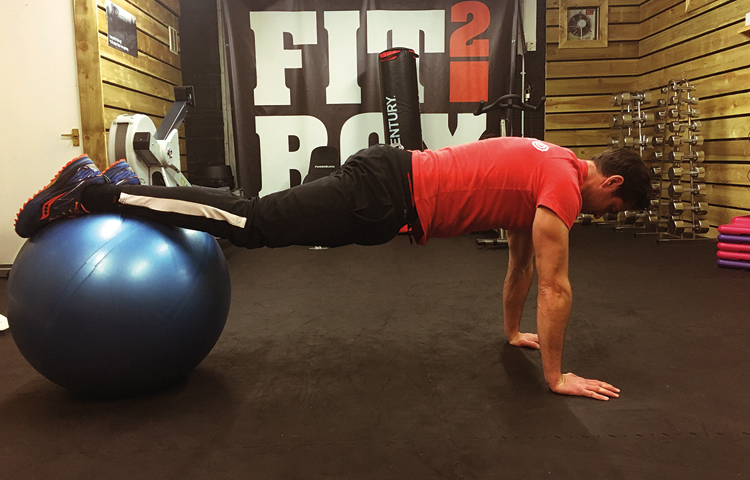
Why do it? Strengthen the hip flexors, essential for knee and thigh drive and propulsion.
Equipment needed: Swiss ball.
– Start in a press-up position with shin and ankles on the Swiss ball.
– Aim to keep your spine in a neutral alignment.
– Holding a stable position, drag your knees underneath you, bringing the ball forward. Keep your shoulders, neck, spine and hips stable and strong.
– Move your knees to 90 degrees with your hips, breath as you bring your knees forward. Move forwards for two seconds.
– Return legs from bent to straight, extended onto ankles on the Swiss ball. Exhale as you return legs backwards.
– Move backwards for two seconds. A forward and backward movement takes four seconds and equals one repetition.
Beginner: 1 set of 6 to 8. Progress to 2 sets of 6 to 8.
Expert: 1 set of 25.
2. Romanian Deadlift
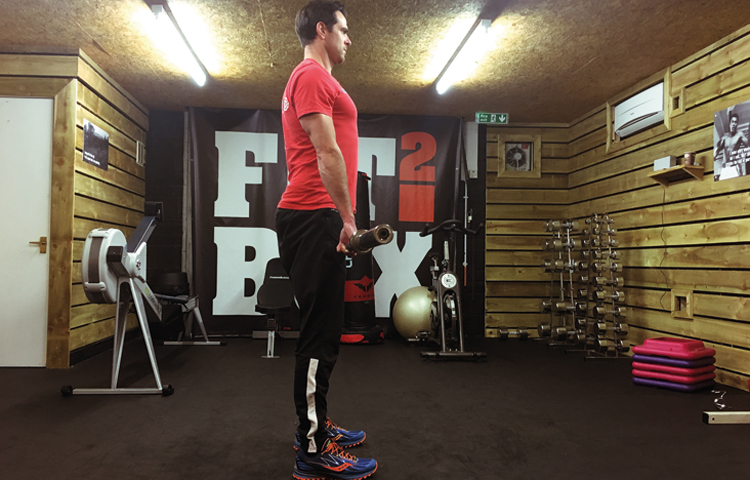
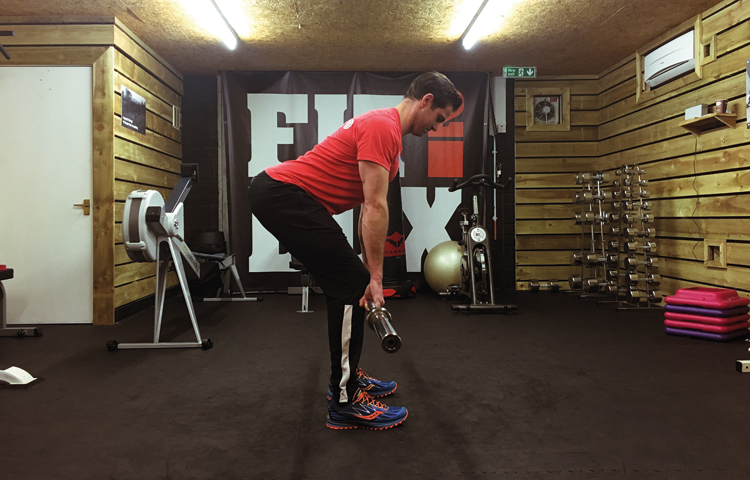
Why do it? Hamstrings and glutes are key major muscles for flexion, extension, control, stability and strength when running.
Equipment needed: 20kg (+) weighted bar. No bar? Try kettlebells or loaded bags.
– Stand facing directly forwards, feet hip-distance apart. Hold the bar with an overhand grip shoulder-width apart with arms straight.
– Hinging forwards from the hip, stick your buttocks out behind you and, bending your knees, lower the bar down your thighs.
– Reach a 30-degree bend in your knees then extend downwards and tip forwards from the hip, lowering the bar below the knees. Keep a strong, flat back, neutral spine, activate your core by drawing the belly button inwards and breath outwards on the lowering motion.
– Return the bar from below the knees by pushing forwards with the hips and engaging the glutes to return to a controlled upright position.
Beginner: Light weight. 1 set of 8 reps. Repeat a second time.
Expert: Heavier weight. 3 sets of 8 reps.
3. Front Squat
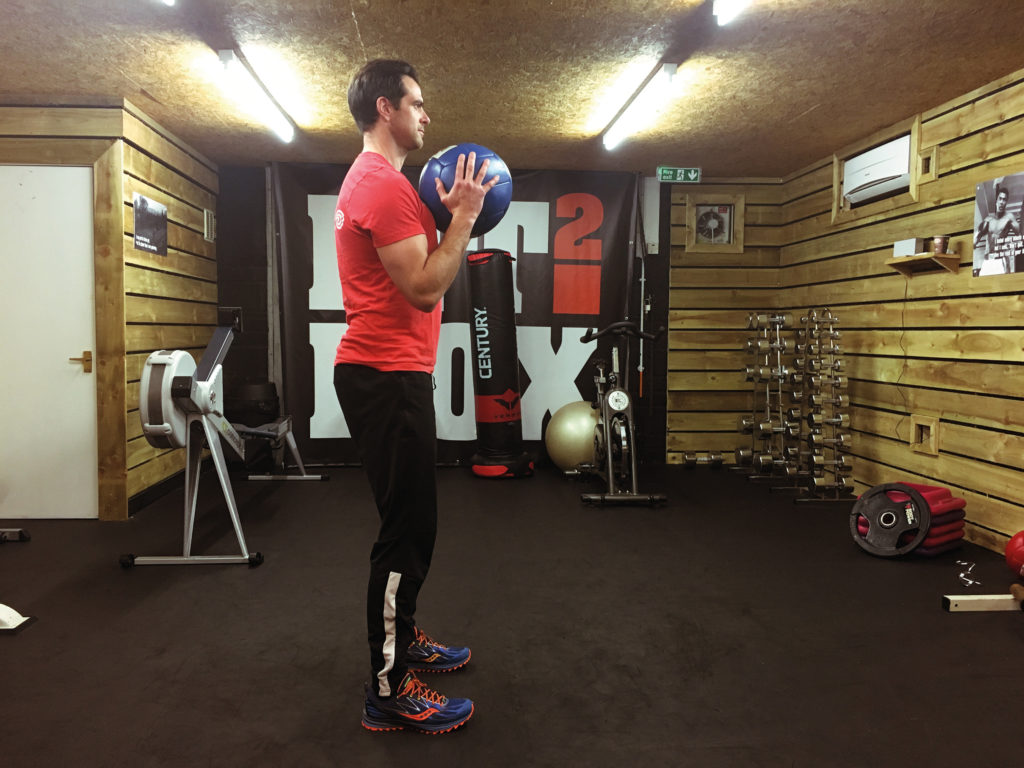
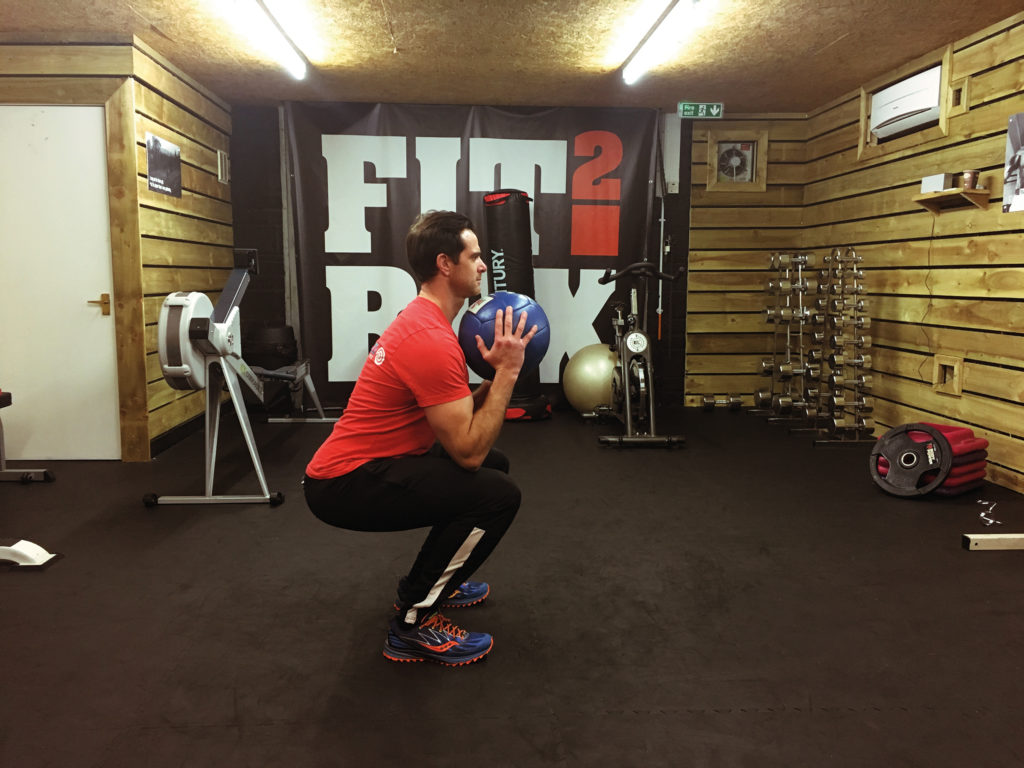
Why do it? Improves quad strength, drive and propulsion. Improves knee stability.
Equipment needed: Technically you can do this exercise with no weight, but adding weight increases the strength demands. To add weight use a weight plate, sandbag or medicine ball.
– Stand upright, feet shoulder-width apart, toes facing forward, knees tracking centrally, and hips and shoulders facing forwards.
– Hold weight at chest height in front of you. The ball can rest gently on chest if applicable.
– As if you were sitting into a chair, stick your buttocks out behind, bend your knees and lower yourself downwards until your thighs are parallel to the floor.
– Avoid leaning forwards, keep your upper body balanced by drawing your belly button in and engaging your core. Breath out as you lower.
– Push through your heels and drive with your quads to return to an upright position.
– Keep your eyes looking forwards and shoulders retracted.
Beginner: Light weight. 1 set of 6 to 8 reps. Repeat x 2.
Expert: Heavier weight. 3 to 4 sets of 8 reps.






